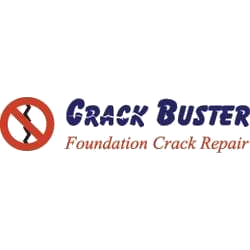BUILDING MATERIALS - POURED CONCRETE
Basements can be constructed using a variety of materials and there are several factors to consider in selecting which to use. The ultimate objective is a structurally sound space that is comfortable and functional. The comfort factor will depend, in part, on the basement’s ability to insulate against heat loss. How functional the basement is often hinges on how dry it is. Different materials perform these functions to varying degrees; the star performer is poured concrete.
Concrete is a mixture of sand, gravel, and cement (the bonding ingredient). Cement is a complex mixture of various mineral oxides (calcium, silicon, aluminum, iron, and magnesium), crushed into a fine powder. These elements can be combined in a variety of ways to create a variety of cements. When water is mixed with the powder, a chemical reaction (hydration) takes place which causes the mixture to harden. The slurry of wet cement can be poured into a form and dried to a strong solid in the shape of that form. To make concrete, sand and gravel are mixed into the cement slurry, in varying proportions, depending on the intended use and appearance of the finished products.
Because of its availability and durability, concrete is the most widely used building material in the world. It is also one of the strongest building materials available in terms of compression (the pushing force). Concrete can have a compressive strength of more than 7,000 psi. In contrast, it is relatively weak in tensile strength (the stretching force). In order to improve the tensile strength of a concrete structure, steel reinforcing bars, “rebar,” and metal netting are embedded into the poured concrete. This is done because steel is equally strong in tension and compression, and can provide the strength in tension that concrete alone would lack. Although steel is excellent in terms of strength, as a basement building material, it has the significant drawback of being subject to corrosion—by being embedded in the concrete, it is protected from corrosion. Concrete is strong, won’t rust, and is comparatively affordable.
Pouring concrete requires the use of forms, which can be pre-fabricated or built on site. Large prefabricated forms may require a crane to install them. In typical home construction, poured concrete walls are usually from 6” to 10” thick. The thicker the wall, the better it is at insulating from sound as well as thermally. Another significant advantage of poured concrete is that the walls are seamless, thus they are drier. Because a dry basement is a useful basement, the superior moisture prevention factor is important.
Poured concrete walls—especially when reinforced with rebar—are stronger than comparable block walls. Because of its high strength, poured concrete can withstand massive loads and remain structurally sound for a hundred years!

There are no comments